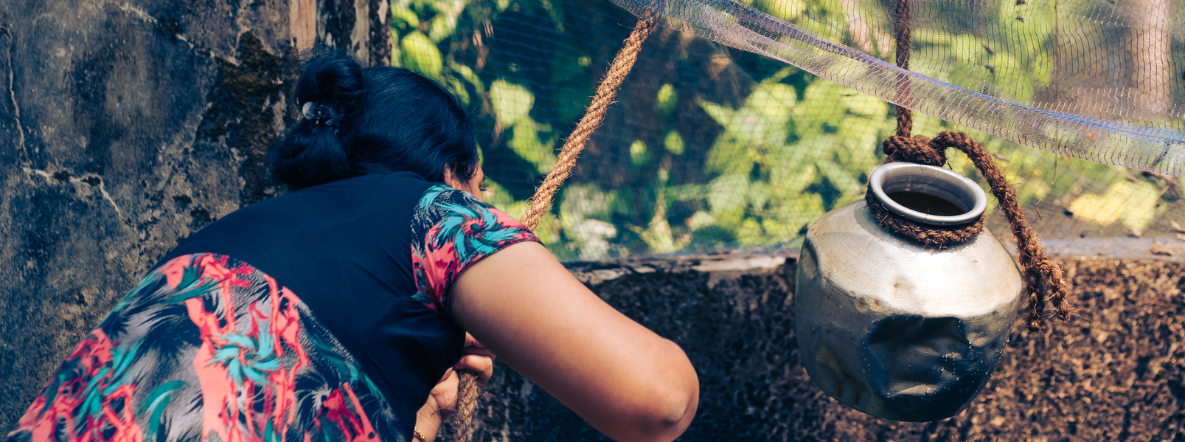The challenge of gender access to clean water
29 Mar 2023
Opinion: Anupma Mehta and Sanjib Pohit.
There is a need for community-based approaches for resolving the water crisis and liberating women from the task of fetching it
India accounts for 18 per cent of the world’s population, but holds only 4 per cent of its water resources, making it one of the most water-deficient regions in the world
As the annual World Water Day was celebrated across the globe on March 22, highlighting the cross-cutting theme of clean water, sanitation and hygiene (WASH) for 2023, the significance of fresh water and, even more so, its rising shortage in most parts of the world has come home to us forcefully. This is also the time when the United Nations World Water Development Report (WWDR), providing a detailed assessment of the world’s freshwater resources and their sustainable management, is released. And the report card for this year is in the red.
This compelled us to sit up and notice the criticality of poor access to water and its cascading adverse impact on gender equality, health, and education. WWDR 2023 finds that around 10 per cent of the world’s population lives in countries experiencing extreme water scarcity. It also finds that 26 per cent and 46 per cent of people globally lack access to safe drinking water and basic sanitation, respectively. What is of increasing concern to us is the revelation that 80 per cent of the people living under persistent water stress reside in Asia, particularly India, Pakistan, and north-east China.
The UN Report’s analysis is corroborated by an erstwhile Niti Aayog report. This pointed out that India accounts for 18 per cent of the world’s population, but holds only 4 per cent of its water resources. This makes it one of the most water-deficient regions in the world. The Central Ground Water Board of the Ministry of Jal Shakti too claims that continuous unregulated ground water extraction has contaminated water resources. This poses a threat to communities depending on these sources.
A recent study on the livelihood and health challenges facing the riverine communities of the river Ganga, jointly conducted by the National Council of Applied Economic Research (NCAER) and the Tata Centre for Development at the University of Chicago, also highlights the mounting levels of pollution in the river and its deteriorating water quality. Using a multi-disciplinary approach, this study encompassed a variety of stakeholders in West Bengal and Uttar Pradesh, the two states where selected river stretches were examined. The study finds that, notwithstanding the flagship Government programmes to clean the Ganga including the Ganga Action Plan and the Namami Gange National Mission, little has been achieved in terms of tackling pollution.
It is also estimated that the Ganga river basin, which is the world’s most populous river basin, receives 2,723.3 million litres of wastewater daily from industrial discharges and effluents, and serves as a site for anthropogenic activities like laundry, washing of farm animals, open defecation, and urination, thereby pushing the pollution levels in the river beyond permissible limits.
Another NCAER project, the India Human Development Survey (IHDS), jointly undertaken with the University of Maryland, US, also documents the challenges in accessing clean water and sanitation across the country, particularly in its villages. The IHDS, a multi-topic panel survey of 41,554 households in 1503 villages and 971 urban neighbourhoods across India, finds that only 13 per cent of rural households receive piped water in their homes. Others have to depend on external sources.
The IHDS also flags the gender element in the water conundrum, as households without access to indoor water have to spend substantial time, estimated at 109 minutes per day in rural areas and 76 minutes per day in urban areas, collecting water from distant sources, and this burden is mostly shouldered by the women in the households, which in turn affects both their productivity and quality of life. As many as 94.8 per cent of households without indoor water report women fetching water. This is compared to only 70 per cent reporting male involvement. In fact, girls in many of these homes drop out of school or neglect their studies to supplement the family’s water collection efforts. This has an impact on both education and labour market participation for women.
How can India overcome these challenges and synchronise its water-related policies with WWDR 2023 to “accelerate the change to solve the water and sanitation crisis”? As pointed out in the WWDR itself, one of the solutions is the implementation of programmes like the Jal Jeevan Mission. This envisions safe and adequate drinking water through individual tap connections by 2024 to all households in rural India.
There is a need for other community-based approaches for not merely resolving the water crisis but also for liberating women from the burden of unpaid care work, and paving the way for better health and education outcomes across rural and urban populations in the country.
(Anupma Mehta is Editor and Sanjib Pohit is Professor at NCAER. Views are personal)
Published in: The Pioneer, 29 Mar 2023






